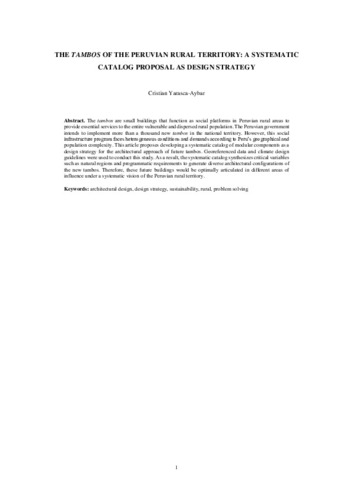The tambos of the peruvian rural territory: a systematic catalog proposal as design strategy

Visualitza/Obre
Cita com:
hdl:2117/349180
Tipus de documentArticle
Data publicació2021-05-26
EditorRoutledge
Condicions d'accésAccés obert
Llevat que s'hi indiqui el contrari, els
continguts d'aquesta obra estan subjectes a la llicència de Creative Commons
:
Reconeixement-NoComercial-SenseObraDerivada 3.0 Espanya
Abstract
The tambos are small buildings that function as social platforms in Peruvian rural areas to provide essential services to the entire vulnerable and dispersed rural population. The Peruvian government intends to implement more than a thousand new tambos in the national territory. However, this social infrastructure program faces heterogeneous conditions and demands according to Peru’s geographical and population complexity. This article proposes developing a systematic catalog of modular components as a design strategy for the architectural approach of future tambos. Georeferenced data and climate design guidelines were used to conduct this study. As a result, the systematic catalog synthesizes critical variables such as natural regions and programmatic requirements to generate diverse architectural configurations of the new tambos. Therefore, these future buildings would be optimally articulated in different areas of influence under a systematic vision of the Peruvian rural territory.
CitacióYarasca, C. The tambos of the peruvian rural territory: a systematic catalog proposal as design strategy. "Journal of Architecture and Urbanism", 26 Maig 2021, vol. 45, núm. 1, p. 80-94.
ISSN2029-7955
Versió de l'editorhttps://journals.vgtu.lt/index.php/JAU/article/view/13944#
Col·leccions
| Fitxers | Descripció | Mida | Format | Visualitza |
|---|---|---|---|---|
| Cristian Yarasca-Aybar_Postprint.pdf | Cristian Yarasca-Aybar | 2,415Mb | Visualitza/Obre |


